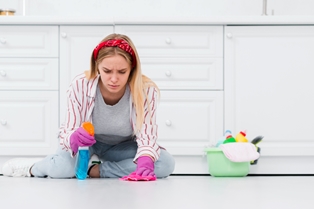Rust is a common issue with cast iron cookware that can be unsightly and potentially affect the quality of your cooking. However, with the right techniques, it’s entirely possible to restore your cast iron to its former glory.
Understanding the Causes of Rust
Before diving into removal methods, it’s crucial to understand why rust forms on cast iron. Exposure to moisture and oxygen is the primary culprit. When the protective layer of seasoning is compromised or when the cast iron is not properly dried after use, rust can begin to develop.
Preparing the Materials and Workspace
Before beginning the rust removal process, gather the necessary materials: vinegar, electrolysis setup (if applicable), sandpaper or steel wool, commercial rust remover (if preferred), and protective gear such as gloves and goggles. Additionally, ensure you have a well-ventilated workspace to carry out the process safely.
Methods for Removing Rust from Cast Iron
There are several effective methods for removing rust from cast iron:
Using Vinegar
Vinegar is a mild acid that can dissolve rust without damaging the cast iron. To use this method, submerge the rusty cast iron in a mixture of equal parts vinegar and water for several hours or overnight. Afterward, scrub the surface with a sponge or brush to remove loosened rust particles.
Electrolysis
Electrolysis is a more involved but highly effective method for rust removal. It involves setting up an electrolysis tank with a sacrificial anode, such as a piece of scrap metal, and immersing the rusty cast iron in a solution of water and washing soda. A low-voltage electrical current is then passed through the solution, causing the rust to transfer from the cast iron to the sacrificial anode.
Sanding and Scrubbing
For minor rust spots, sanding or scrubbing with steel wool can be effective. Start with coarse-grit sandpaper or steel wool to remove the bulk of the rust, then switch to finer grits to smooth out the surface. Be sure to wear protective gear and work in a well-ventilated area when sanding cast iron.
Commercial Rust Removers
There are numerous commercial rust removers available on the market, ranging from chemical solutions to abrasive pads. Follow the manufacturer’s instructions carefully when using these products and be sure to wear protective gear.
Step-by-Step Guide for Each Method
Vinegar Method:
- Mix equal parts vinegar and water in a container large enough to submerge the rusty cast iron.
- Submerge the cast iron in the vinegar solution and let it soak for several hours or overnight.
- Remove the cast iron from the solution and scrub with a sponge or brush to remove loosened rust particles.
Electrolysis Method:
- Set up an electrolysis tank with a container, sacrificial anode, and a power source.
- Mix water and washing soda in the tank according to the manufacturer’s instructions.
- Submerge the rusty cast iron in the solution and connect it to the negative terminal of the power source.
- Connect the sacrificial anode to the positive terminal and turn on the power source to initiate the electrolysis process.
- Monitor the process until the rust is removed, then remove the cast iron and rinse it thoroughly.
Sanding and Scrubbing Method:
- Use coarse-grit sandpaper or steel wool to scrub the rusty areas of the cast iron.
- Continue scrubbing until the rust is removed, then switch to finer grits to smooth out the surface.
Commercial Rust Removers:
- Follow the manufacturer’s instructions for the specific rust remover you’re using.
- Apply the product to the rusty areas of the cast iron and let it sit for the recommended amount of time.
- Scrub the surface with a sponge or brush to remove loosened rust particles.
- Rinse the cast iron thoroughly with water and dry it completely.
Safety Precautions to Consider
Regardless of the method chosen, it’s essential to prioritize safety:
Wear Protective Gear:
Always wear gloves and goggles to safeguard your hands and eyes from exposure to chemicals and debris during the rust removal process.
Ensure Proper Ventilation:
Work in a well-ventilated area to prevent the inhalation of potentially harmful fumes or dust particles that may be released during rust removal.
Follow Manufacturer’s Instructions:
Adhere to the instructions provided by the manufacturer for any chemical products or equipment utilized in the rust removal process. This ensures safe and effective use of the products.
Handle Electricity Safely:
If employing methods involving electricity, such as electrolysis, take necessary precautions to avoid accidents or injury. Follow electrical safety guidelines and ensure proper insulation of equipment to minimize risks.
Tips for Preventing Rust in the Future
After removing rust from your cast iron, take steps to prevent it from recurring:
Thoroughly Dry After Use:
After each use, make sure to dry your cast iron cookware thoroughly. This helps prevent moisture buildup, which can lead to rust formation.
Store in a Dry Environment:
Store your cast iron in a dry environment away from moisture and humidity. Avoid leaving it in areas prone to moisture accumulation, such as near sinks or in damp basements.
Regular Re-seasoning:
Re-season your cast iron regularly to maintain its protective coating. This involves applying a thin layer of oil and baking it in the oven to create a durable non-stick surface that helps prevent rust.
FAQs
Here are some FAQs related to How to Remove Rust from Cast Iron
Yes, lemon juice contains citric acid, which can also help dissolve rust. However, it may not be as effective as vinegar for larger rust spots.
Yes, a wire brush can be effective for removing rust from cast iron, especially for stubborn spots. Just be sure to use it gently to avoid damaging the surface of the cookware.
It’s recommended to re-season your cast iron every few months or as needed, depending on your usage and storage conditions.
No, it’s not recommended to clean cast iron in a dishwasher, as the harsh detergents and high heat can strip away the seasoning and promote rust formation.
If rust continues to be a problem despite your best efforts, it may be worth consulting with a professional or considering replacing the affected cookware.
Conclusion
Removing rust from cast iron may seem daunting, but with the right techniques and precautions, it’s entirely manageable. Whether you opt for vinegar, electrolysis, sanding, or commercial rust removers, restoring your cast iron to its former glory is a rewarding endeavor that ensures your cookware remains functional and beautiful for years to come.





